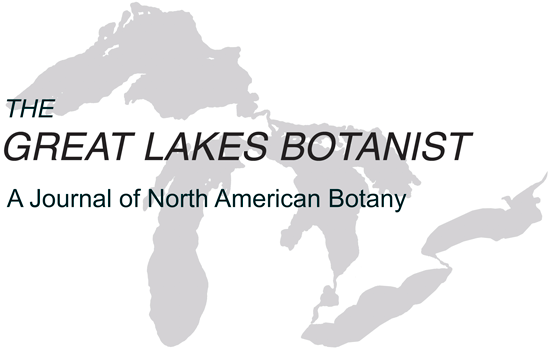Garrett E. Crow and C. Barre Hellquist. 2023. Aquatic and Wetland Plants of Northeastern North America, Second Edition. University of Wisconsin Press, Madison. lx + 887 pp., hardback. ISBN 978-0-299-34300-2. $99.95.
The importance of wetlands, both to people and to the environment, is well known. They provide food and habitat for large numbers of plants and animals. They enhance water quality, provide flood and erosion control, maintain stream flows, and provide food for us, among many other things. In addition, they are among the most productive habitats on earth and are important sites for the storage of atmospheric carbon. For all of these reasons, wetlands have long been considered important objects of conservation efforts, particularly given the penchant of humans to destroy them. For those studying wetlands, as well as those involved in conservation or restoration efforts, it is necessary to have available means of accurate, complete, and up-to-date identification of aquatic and wetland plants. In northeastern North America, nothing could be better for this purpose than the second edition of Crow and Hellquist’s Aquatic and Wetland Plants of Northeastern North America. This is a major updating of the first edition (Crow and Hellquist 2000) that covers the same territory—southeastern Manitoba and Minnesota to Missouri, eastward along the 50th parallel on the north to Newfoundland and Virginia. The southern boundary is adjacent to the range covered by Godfrey and Wooten (1979, 1981) in their corresponding manual for the southeastern United States. The current work treats 1,223 species plus 44 additional infraspecific taxa in 325 genera and 112 families of vascular plants.
A major feature of this volume that greatly enhances its value is the large number of illustrations; nearly all species are illustrated with line drawings taken from a variety of published sources (with permission). The sources and, when known, the names of the artists, are acknowledged in an extensive acknowledgments section at the beginning of the book. The illustrations are large and easy to use. They are well chosen to illustrate both the habit of the plants and critical characters that are necessary for identification. The treatment of each species includes the scientific name, one or more vernacular names, a brief statement of the habitat and distribution of the species, important synonymy, and a numerical reference to the accompanying illustration, which are placed on a page very near the treatment of the species. Infraspecific taxa are similarly treated. Genera are provided with the Latin name, one or more vernacular names, a brief description, useful references, and, for genera with more than one taxon treated in the book, a key to the taxa. There is also a general key to families at the beginning of the book. The keys were rigorously field tested by students taking the several classes in aquatic plants taught by one or the other of the authors or by Ronald L. Stuckey. Generic descriptions are designed to be diagnostic, and, to the extent possible, keys depend on vegetative characters, which are often of value in identifying aquatic and wetland plants.
The species are arranged in three major groups, Pteridophytes, Gymnosperms, and Angiosperms. The families of angiosperms are further arramged in accordance with the major groups recognized by the Angiosperm Phylogeny Group (APG IV 2016), that is, Primitive Angiosperms, Magnoliids, Monocots, Eudicots, Rosids, and Asterids. Within each such group, the families are arranged in accordance with the Pteridophyte Phylogeny Group (2016) for Pteridophytes, Lu et al. (2014) for Gymnosperms, and APG IV (2016) for Angiosperms. Genera and species are arranged within each major group in the order in which they key out (genera and species are numbered, both in the key and in the individual treatments to make finding them easy).
A valuable introductory chapter on “Nuisance Aquatic Plants of the North-east” and a glossary, list of references, and index at the back round out this timely and valuable volume.
Literature Cited
APG IV. (2016). An update of the Angiosperm Phylogeny Group classification for the orders and families of flowering plants: APG IV. Botanical Journal of the Linnean Society 181: 1–20.
Godfrey, R. K., and J. W. Wooten. (1979, 1981). Aquatic and wetland plants of southeastern United States. Two volumes. University of Georgia Press, Athens.
Lu, Y., J.-H. Ran, D.-M. Guo, Z.-Y. Yang, and X.-Q. Wang. (2014). Phylogeny and divergence times of gymnosperms inferred from single-copy nuclear genes. PLoS ONE 9(9): e107679. Available online at https://journals.plos.org/plosone/article/file?id=10.1371/journal.pone.0107679&type=printable (open access).https://journals.plos.org/plosone/article/file?id=10.1371/journal.pone.0107679&type=printable
Pteridophyte Phylogeny Group. (2016). A community-derived classification for extant lycophytes and ferns. Journal of Systematics and Evolution 54: 563–603. Available online at https://onlinelibrary.wiley.com/doi/10.1111/jse.12229 (open access).https://onlinelibrary.wiley.com/doi/10.1111/jse.12229
